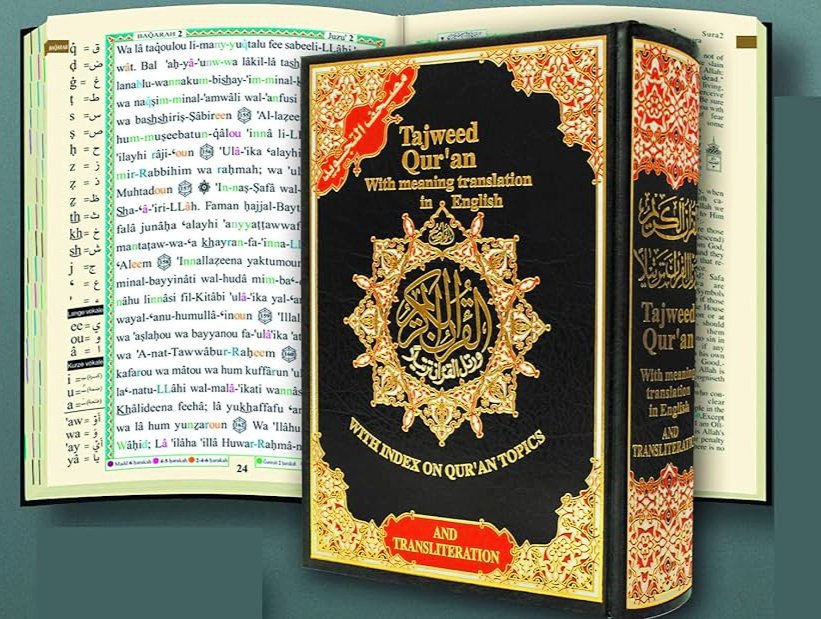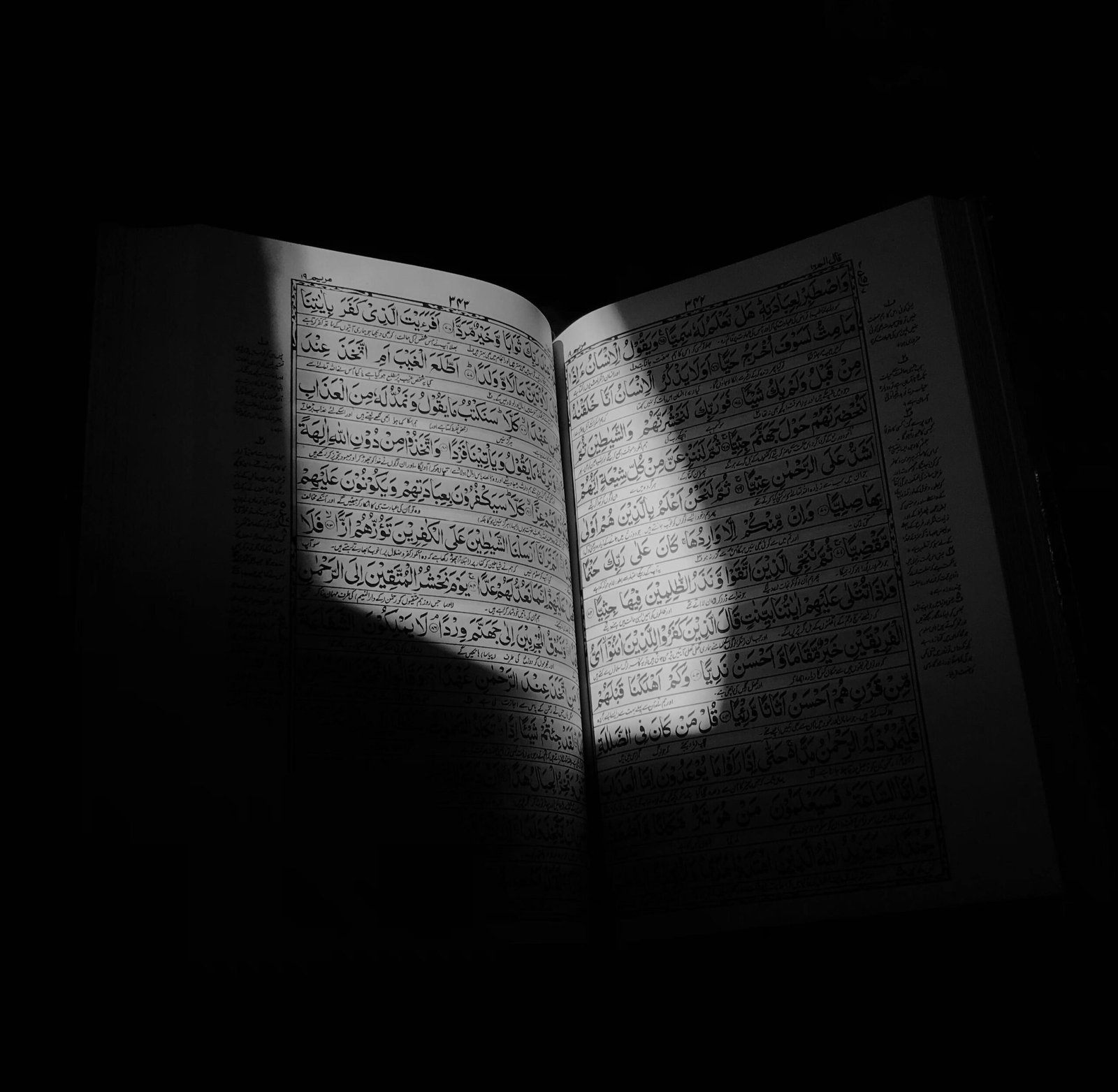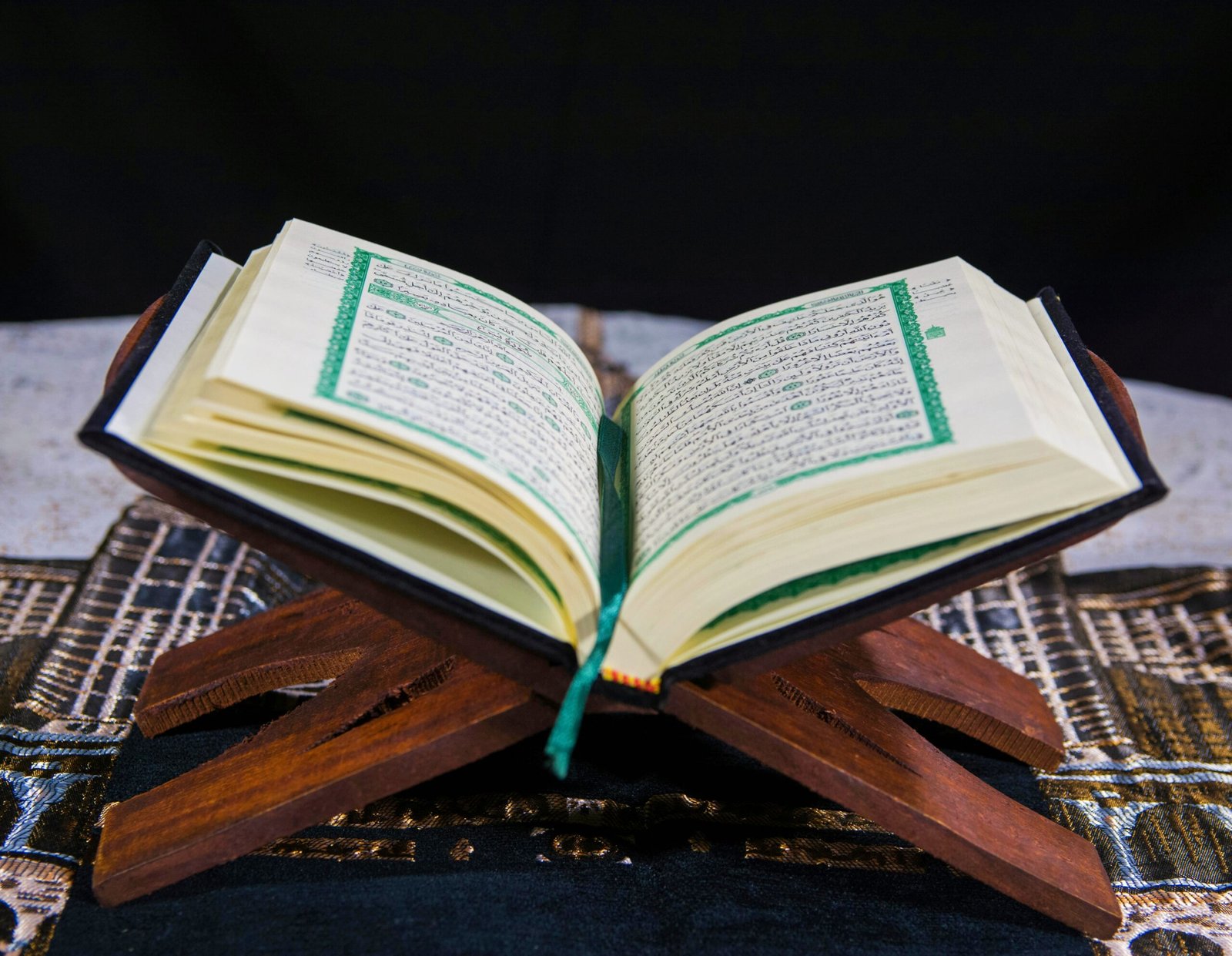Reading the Quran correctly is essential to gain great rewards and understand the meanings of the Ayat, because correct pronunciation ensures that each letter is articulated as it was intended, enhancing both the understanding and the spiritual experience of reciting the Quran, so, it is necessary to continually learn how to pronounce Arabic letters Tajweed from specialized teachers to master all basic pronunciation techniques and apply them to enhance your ability to recite the Quran accurately.
The Sheikh Saleh Academy takes on the task of teaching you how to pronounce Arabic letters Tajweed, as its program focuses on advanced techniques to suit different levels of learners and assist them to pronounce some of the heavy and light Arabic letters with Tajweed to be able to know the places of articulation of these letters from the mouth، as this knowledge helps them become proficient in producing the unique sounds of the Arabic language.
What are Tajweed Letters?
Before talking about How to Pronounce Arabic Letters Tajweed, you must know that all the letters of the Arabic language, which number 28, are subject to the rules of Tajweed science which consists of a set of rules related to pronunciation to ensure that speech is articulated correctly and in a manner consistent with the way the Prophet Muhammad PBUH read the Quran to earn the full reward of this recitation.
Reciting the Quran adheres to these rules with full attention to the quality of the moving letters, which requires a professional teacher in this field from the teachers of the Sheikh Saleh Academy, graduates of Al-Azhar University, who hold Ijazahs and have extensive experience in teaching Tajweed in all its branches. Their expertise is essential for mastering the subtleties of Tajweed, ensuring that you can read the Quran as it was revealed to the Prophet Muhammad PBUH.
How to Pronounce Arabic Letters Tajweed
Knowing how to pronounce Arabic letters Tajweed relies heavily on training the mouth to pronounce each letter from its original point of articulation and listening frequently to skilled reciters until you become able to pronounce the letters like them, as this repetitive practice helps in achieving precision and consistency in pronunciation and makes the Muslim less prone to mistakes in reading the Quran and earns the reward and recites as the Prophet Muhammad PBUH did.
There are some similar words in the Arabic language, each differing only in pronunciation method but similar in the letters used, so understanding these subtle differences is crucial for accurate recitation and comprehension, as these words are distinguished by their vowel marks and pronunciation method, thus understanding the speech correctly without any errors in comprehension and without losing the original meaning of the speech.
4 Tajweed Rules

After understanding how to pronounce Arabic letters Tajweed, we mention four fundamental Tajweed rules as follows:
Al-Madd
This involves prolonging the sound when pronouncing one of the three elongation letters, namely the silent Alif (ا) if the letter before it has a Fatha ( َ ), the silent Waw (و) if the letter before it has Damma ( ُ ), and the silent Ya (ى) if the letter before it is Kasra ( ِ ). Al-Madd helps in differentiating between similar sounding letters and words, and it’s necessary to extend these letters for two counts if they are not followed by a Hamza, a Sukoon, or a stressed letter, but if followed by a Hamza, a Sukoon, or a stressed letter, the Madd should be between four to six counts depending on the type of Madd.
Al-Tafkheem
This refers to thickening the sound when pronouncing certain Arabic letters so that the letter is thick and full in the mouth, as Tafkheem ensures the clarity and weight of each letter from these letters are خ, ص, ض, غ, ق, ط, and ق. It is essential to know that these letters should always be emphasized, but the degree and extent of emphasis vary based on the preceding letter and the movement and formation of that letter.
Al-Tarqeeq
This term is the opposite of Al-Tafkheem and refers to lightening the sound when pronouncing some Arabic letters so that the letter is light in the mouth. This applies to all Arabic letters except for the previously mentioned emphasis letters, However, there are also a set of letters that sometimes has Tarqeeq and sometimes Tafkheem, such as Laam (ل) and Raa (ر), depending on their movement and the letters before them if they are silent.
Al-Ghunna
Al-Ghunna is a nasal sound that emerges from the nose and is present in two letters, namely Nun ن and Meem م and appears in several conditions, especially when Noon or Meem is stressed as it’s considered one of the crucial rules related to the regulations of the silent Noon and Tanween, as well as the silent Meem.
Read more: Do You Get Rewards For Reading Quran In English?
How to Pronounce Heavy Letters in Arabic

Knowing how to pronounce Arabic letters Tajweed requires understanding that some letters are heavy while others are light, to pronounce the heavy letters mentioned earlier, you need to raise your tongue towards the upper palate to thicken the sound while pronouncing them from their original point in the mouth to ensures the correct articulation and resonance of heavy letters.
For non-native Arabic speakers, pronouncing heavy or elevated letters may be challenging at first as It requires patience and dedication to achieve proficiency, However, with continuous and consistent practice and following up with the Sheikh Saleh Academy through its teachers, you will be able to pronounce these letters professionally in the shortest possible time.
Read more: How to teach Quran to 3 year old
Secrets to Pronouncing Arabic Letters Tajweed

Knowing how to pronounce Arabic letters with Tajweed requires following a set of guidelines and tips as follows:
- Fully commit to following up with a Tajweed teacher without neglecting lessons to ensure continuous follow-up, which will undoubtedly be distinguished with the Sheikh Saleh Academy.
- Continuously practice pronouncing letters from their correct articulations without merging the points of articulation, as consistent feedback from your teacher will help refine your skills, and this is achieved by following up with the Tajweed teacher regarding your specific articulation points.
- Always work on applying all Tajweed rules, including Tafkheem and Tarqeeq, mastering Madd, Ghunnah, letter characteristics, and other rules.
- It is also essential to choose a teacher who holds an Ijazah in Quranic Tajweed as this science requires professional teachers like those at the Sheikh Saleh Academy, graduates of Al-Azhar University.
Read more: Ikhfa shafawi examples in quran
How Do You Read Arabic Letters?

To read Arabic letters easily, you should start by studying the correct pronunciation of each letter and learning how to write and recognize its shape, as familiarity with letter shapes and sounds will aid in efficient reading and writing, then continuously practice reading the letters and listening to them from a native Arabic teacher.
Learning to read Arabic letters is crucial if you wish to read the Quran in its original language to earn great rewards, especially as it will be required in many situations, such as prayers that necessitate reading the Quran in Arabic, therefore, rely heavily on listening to native Arabic speakers, mimicking their pronunciation, and practicing consistently to pronounce correctly.
Read more: Stop Signs in the Quran
How Do You Pronounce ح?
The letter Haà ح is one of the letters that many non-native Arabic speakers find difficult to pronounce because it is not present in many languages, so understanding its unique sound and articulation is essential for proper pronunciation، however, you can learn to pronounce it correctly by knowing its original articulation point, which is from the middle of the throat, and practicing releasing air from the middle of the throat until the specific sound of this letter is produced.
If the letter ح is present in your language, you can compare the sound of Ha in Arabic with the sound in your native language, as this comparison can facilitate the learning process, however, most languages other than Arabic don’t contain this letter, though it is prevalent in Arabic.
Read more: Tawheed activity for kids
How to Pronounce the Arabic Letters Tajweed with Fatha?
After knowing How to Pronounce Arabic Letters Tajweed, you should know Fatha is one of the well-known Arabic diacritics, placed above Arabic letters to produce an open sound similar to the letter “a” in English. Fatha helps in distinguishing between different vowel sounds in Arabic as it’s pronounced by opening the mouth during pronunciation to produce this sound, which is different from the other two movements, which are Damma and Kasra.
You should practice this movement extensively and continuously by reading many words with letters that have a Fatha, as frequent practice and guidance will lead to proficiency in pronunciation, With continuous follow-up with an Arabic teacher at the Sheikh Saleh Academy, you can master pronouncing letters with Fatha with ease.
Shaikh Saleh Academy courses: